How to Distinguish the Antique Muses
We all know what a muse is. When we feel inspired or motivated, we say, “I was inspired by a muse.” But the muses were also Greek goddesses, patrons of the arts, literature, and science. There were 9 of them, and each one was responsible for her own sphere.
At 5-Minute Crafts, we were curious to study this question, and we searched the Internet thoroughly to find more information about these Greek goddesses.
How many muses there are, and where they are from
Historians don’t have a unanimous opinion on the exact number of muses. For example, the ancient Roman scholar, Varro, believed that there were only 3 muses. And Hesiod said that there were 9 muses who were the daughters of Zeus and Mnemosyne, the goddess of memory. However, nowadays, it’s customary to believe that there were 9 muses.
The birthplace of the muses is believed to be Pieria, the area at the foot of Mount Olympus. And one of their main centers was Mount Helikon in Boeotia.
Each muse is a patron of a certain science or art. Each of them had their own attribute (this was necessary because the statues of the muses were very popular, and people had to distinguish them somehow).
Calliope, the Muse of eloquence and epic poetry
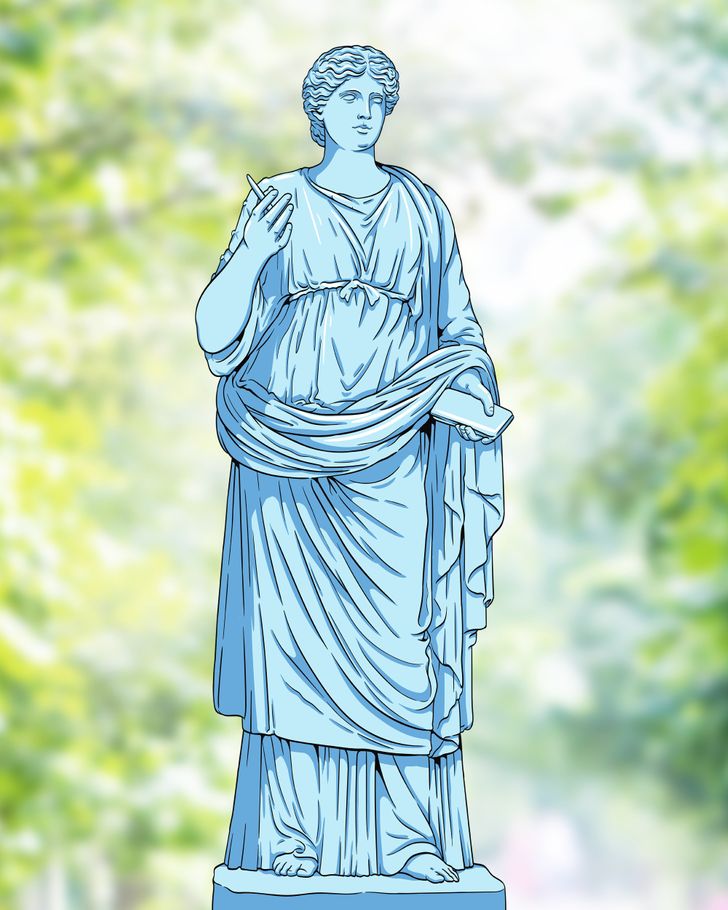
Both Ovid and Hesiod called her the “Chief of all Muses.” Calliope is the patron of epic poets, orators, and philosophers. According to legend, it was she who taught the famous Orpheus poetry. Calliope is often depicted holding wax tablets and a stylus in her hand, along with a roll of paper or books.
Euterpe, the Muse of lyric poetry and music
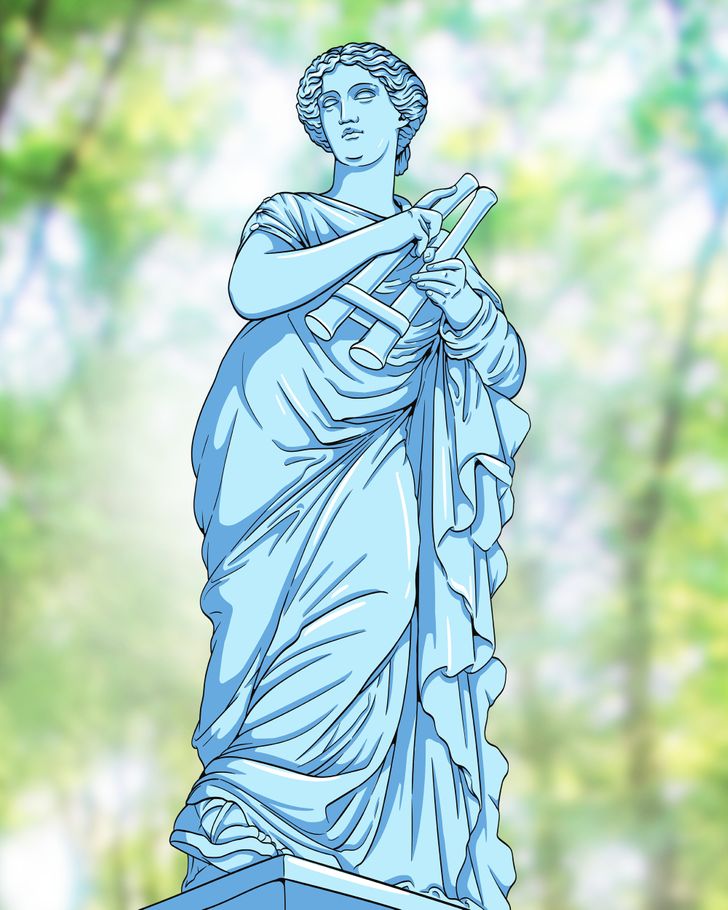
It was believed that Euterpe, along with her sisters, lived on Mount Olympus and entertained other Olympian gods. Ancient Greek musicians looked to her for inspiration. There is also a legend that it was she who invented the aulos (a double flute). Euterpe is portrayed with a flute in her hand most often.
Melpomene, the Muse of tragedy
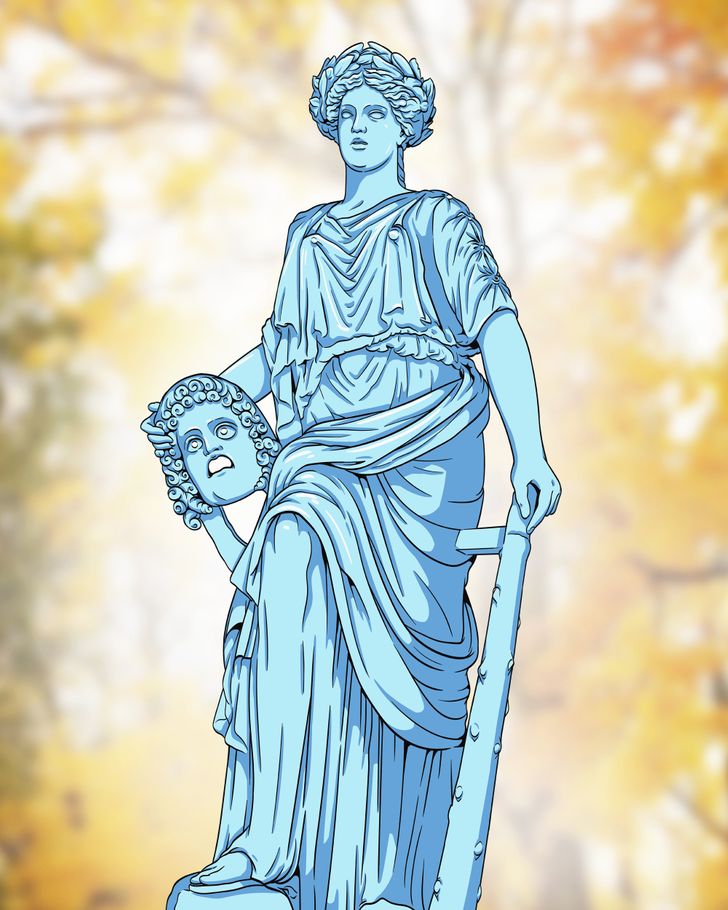
Her name means “the one that is melodious,” and initially, Melpomene was the Muse of the chorus. But later, she became the patron of tragic poets. She is portrayed in theatrical robes and boots, which were often worn by tragic actors, with a mask in one hand and a sword or club in the other. Her head is adorned with a wreath of grape or ivy leaves.
Thalia, the Muse of comedy and idyllic poetry
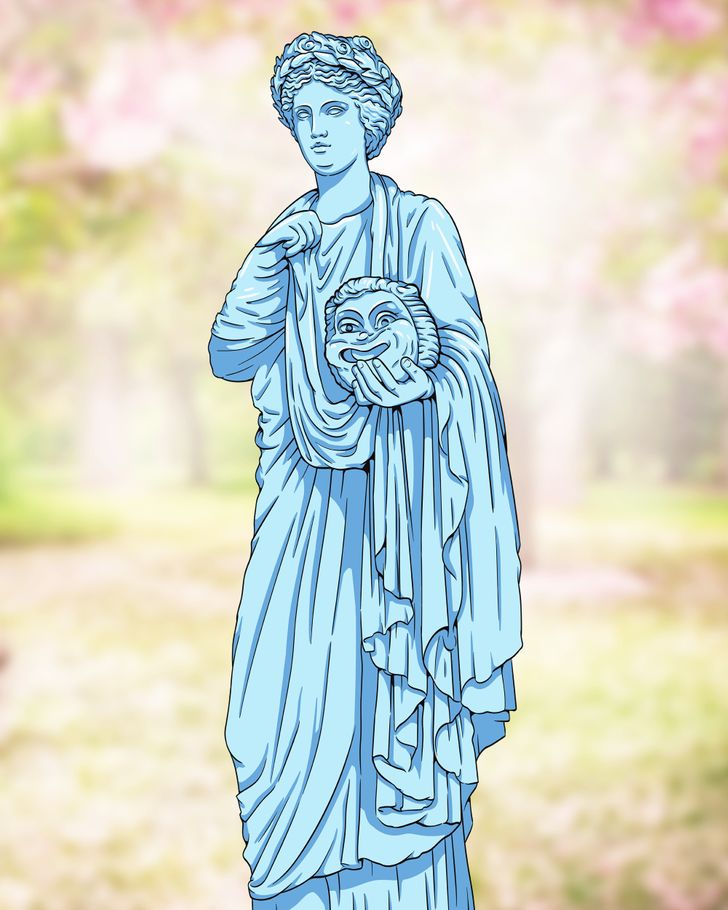
In Ancient Greek, her name means “the joyous, the flourishing.” Thalia patronizes poets and comedians. She is portrayed as a young woman whose head is entwined with ivy, wearing boots and holding a comic mask in her hand. Sometimes she’s depicted holding a bugle and a trumpet — these musical instruments were used to support the actors’ voices in ancient comedy. Sometimes musical instruments are replaced by a shepherd’s staff.
Erato, the Muse of love poetry
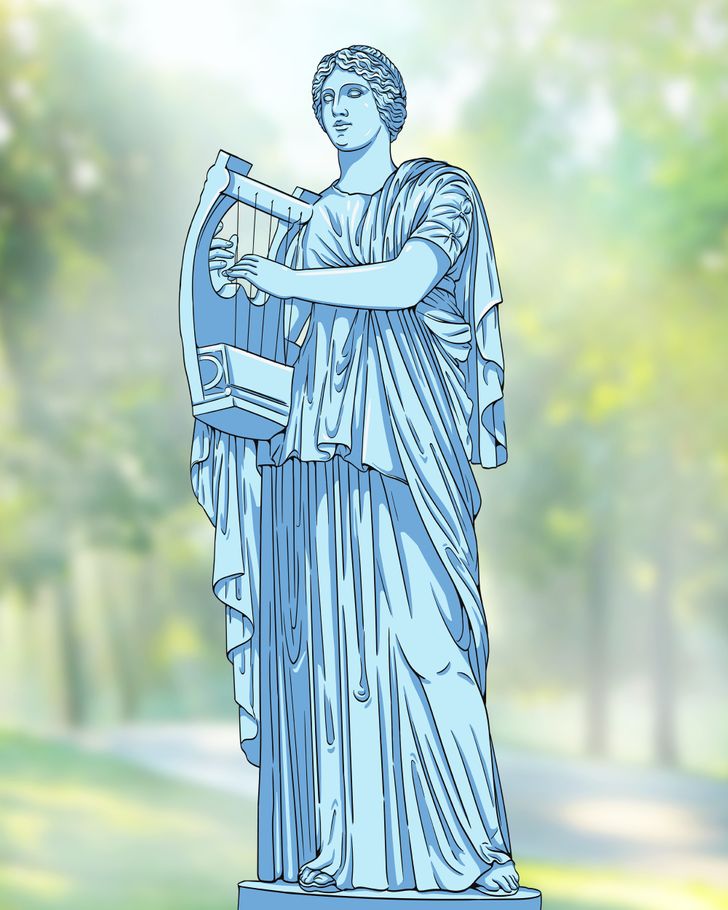
Since the Renaissance, this muse, the patron of lyric poets, has been portrayed with a wreath of myrtle and roses. Erato usually holds a small kithara or lyre in her hands. Sometimes she’s depicted holding a golden arrow as a direct reference to the god, Eros. Sometimes Erato and Eros are portrayed together.
Polyhymnia, the Muse of sacred hymn
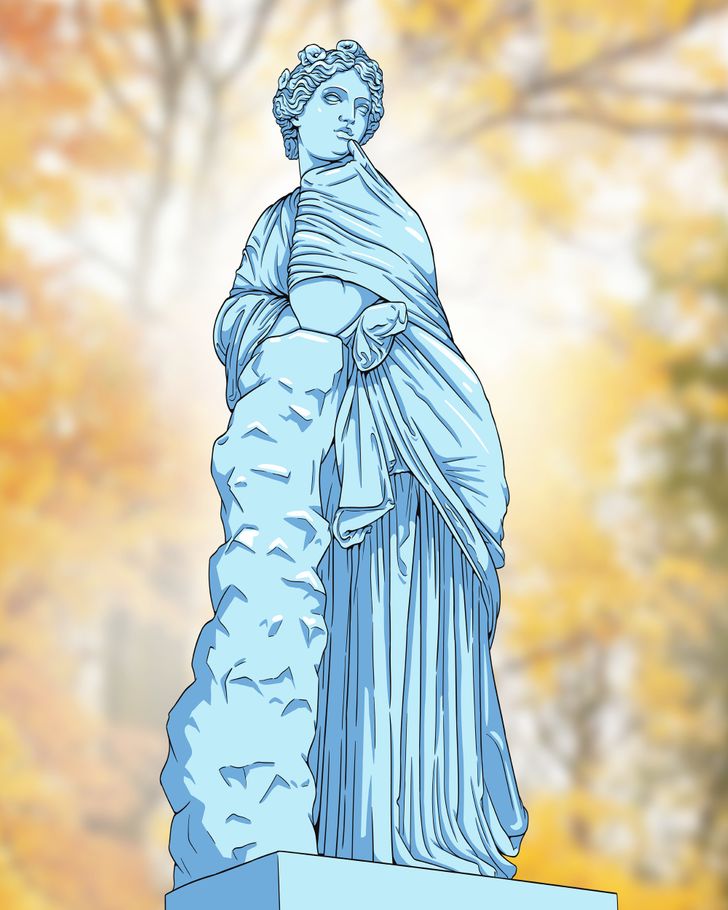
It’s not just of hymns — Polyhymnia was also the patron of agriculture, pantomime, and eloquence. Her name comes from 2 Greek words: poly (many) and hymnos (praise). Polyhymnia is portrayed as a very serious woman, wearing a long cloak and veil. Sometimes she’s holding her finger to her mouth with her elbow resting on a pillar next to her.
Terpsichore, the Muse of dance
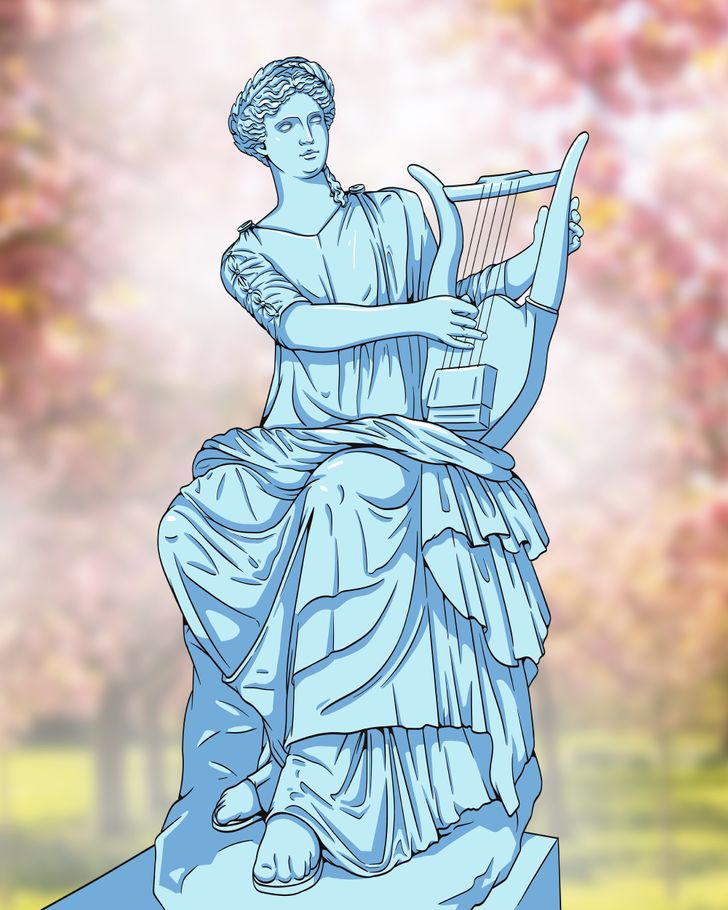
Her name means “of or relating to dance.” In addition to dancing, Terpsichore is the patron of the chorus. Usually, this muse is depicted sitting, holding a lyre in her hands, accompanying the choir and dancers with her music. In the other hand, she’s sometimes holding a plectrum, an object with which the strings are plucked on a lyre or other string instruments.
Clio, the Muse of history
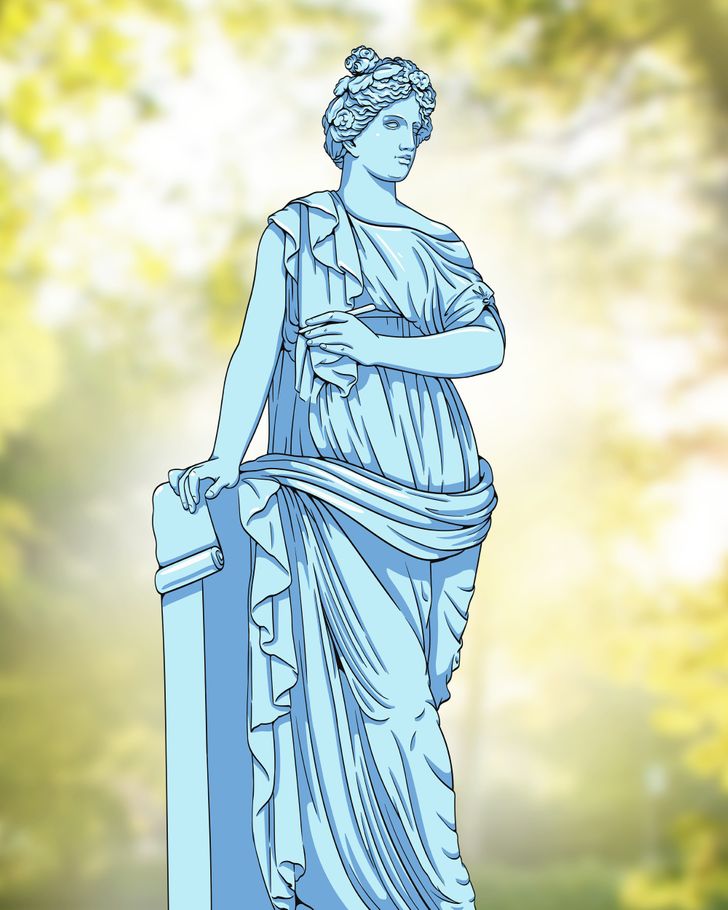
Clio is also the patron of lyre playing. There is a bay in Antarctica that is named after this muse. Clio is often depicted holding a parchment scroll, a stack of books, or a set of writing tablets.
Urania, the Muse of astronomy
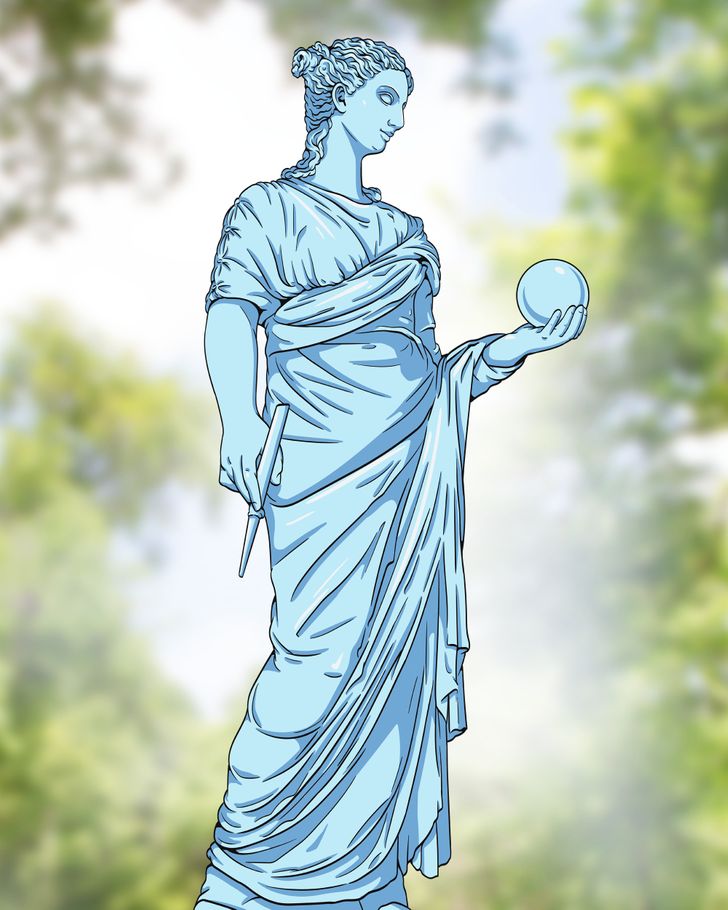
Urania (“heavenly” in Greek) is the muse who is believed to be the eldest of 9 sisters. According to legend, she inherited the greatness and strength of her father, Zeus, as well as the grace and beauty of her mother, goddess Mnemosyne. Usually, Urania is dressed in a cloak embroidered with stars, and her eyes are focused on the heavens. She is holding a celestial globe and a little staff. According to legend, Urania can predict the future by the stars.